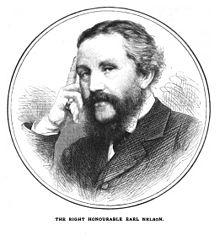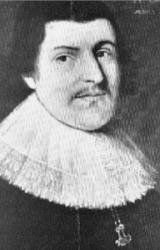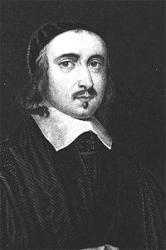Planning worship?
Check out our sister site, ZeteoSearch.org,
for 20+ additional resources related to your search.
- |
User Links
Person Results
Cyril Taylor
1907 - 1991 Person Name: Cyril V. Taylor Composer of "SHELDONIAN" in Rejoice in the Lord Cyril V. Taylor (b. Wigan, Lancashire, England, 1907; d. Petersfield, England, 1992) was a chorister at Magdalen College School, Oxford, and studied at Christ Church, Oxford, and Westcott House, Cambridge. Ordained a priest in the Church of England in 1932, he served the church as both pastor and musician. His positions included being a producer in the religious broadcasting department of the BBC (19391953), chaplain of the Royal School of Church Music (1953-1958), vicar of Cerne Abbas in Dorsetshire (1958-1969), and precentor of Salisbury Cathedral (1969-1975). He contributed twenty hymn tunes to the BBC Hymn Book (1951), which he edited, and other tunes to the Methodist Hymns and Psalms (1983). He also edited 100 Hymns for Today (1969) and More Hymns for Today (1980). Writer of the booklet Hymns for Today Discussed (1984), Taylor was chairman of the Hymn Society of Great Britain and Ireland from 1975 to 1980.
Bert Polman
Cyril Taylor
Walter Greatorex
1877 - 1949 Person Name: Walter Greatorex, 1877-1949 Composer of "WOODLANDS" in Pilgrim Hymnal Walter Greatorex (b. Mansfield, Nottinghamshire, England, 1877; d. Bournemouth, Hampshire, England, 1949) was director of music at Gresham's School, Holt, Norfolk, where from 1911-1936. Before that he served as assistant music master at Uppingham School in Rutland (1900-1910). Greatorex's musical education began as a chorister at King's College, Cambridge, England, and he received his university music training at St. John's College, Cambridge.
Bert Polman
Walter Greatorex
Horatio Nelson

1823 - 1913 Person Name: Earl Nelson Adapter of "Draw Nigh to Thy Jerusalem" in Rejoice in the Lord Earl Nelson was born in 1823. He was educated at Eton, and Trinity College, Cambridge. He is a relative of England's greatest naval hero. An active layman, he has been of service to the Church in many of her religious and benevolent enterprises. In hymnology he has taken a prominent position; his own hymns are most creditable, and he has been foremost in compiling the Sarum Hymnal, a work of the best character. This hymnal was compiled in 1857, with the assistance of John Keble, at the request of the Bishop of Salisbury. Its first title was The Salisbury Hymn Book. Its popularity was very great. In 1868 it was revised and is now known as The Sarum Hymnal. Earl Nelson has also published a few other works, mostly of a devotional character.
--Annotations of the Hymnal, Charles Hutchins, M.A., 1872
Nelson, Horatio, 3rd Earl Nelson, son of Mr. Thomas Bolton, of Burnham, Norfolk (nephew of the celebrated Admiral Viscount Nelson, whose name he assumed on succeeding to the title as 2nd Earl); was born Aug. 7, 1823, and educated at Eton, and at Trinity College, Cambridge. He succeeded to the title Nov. 1, 1835. In 1857 he edited the Salisbury Hymn-Book. In this work he was assisted by J. Keble, who re-wrote some of the older hymns and translated others from the Latin. This collection was remodelled and published as the Sarum Hymnal in 1868. In the preparation of this work Earl Nelson was assisted by the Revs. J. R. Woodford (afterwards Bishop of Ely) and E. A. Dayman. In 1864 he published his Hymn for Saint’s Day, and other Hymns. In this appeared the hymn by which he is most widely known, “From all Thy saints in warfare, for all Thy saints at rest" (p. 398, ii.). He has also published A Form of Family Prayer, with Special Offices for the Seasons, 1852; and A Calendar of Lessons for Every Day in the Year, 1857. He was also an active member of the Home Reunion Society, and wrote extensively on the subject.
--John Julian, Dictionary of Hymnology (1907)
Horatio Nelson
Henry Lawes

1596 - 1662 Person Name: Henry Lawes, 1596-1662 Composer of "FARLEY CASTLE" in Hymnbook for Christian Worship Born: January 5, 1596, Dinton, Wiltshire, England.
Died: October 21, 1662, London, England.
Buried: In the cloisters of Westminster Abbey, London, England.
Lawes, tutor to the daughters of the Earl of Bridgewater, is best known as a composer. He became a Gentleman of the Chapel Royal in 1626, and a member of the "King’s Musick" in 1631. He wrote over 400 vocal pieces, as well as anthems and instrumental compositions. His works include:
Choice Psalmes Put into Musick for Three Voices, 1648
Ayres and Dialogues (London: 1653)
Sources:
Frost, p. 680
Hughes, pp. 467-68
Nutter, p. 460
Stulken, p. 292
--www.hymntime.com/tch
Henry Lawes
Jeremy Taylor

1613 - 1667 Author of "Draw nigh to thy Jerusalem, O Lord" in The Harvard University Hymn Book Taylor, Jeremy, D.D. This poet of preachers was born of very humble parentage on both sides, at Cambridge, in August, 1613. His father was a barber. He must have had a good school as a boy. He entered Cams College, of his native city, as a "sizar" in 1626. His career at the university was a brilliant one. He was made fellow of All Souls College, Oxford, in 1632; and rector of Uppingham, Rutlandshire, in 1638, as is still proudly remembered there. He was inevitably "sequestered" by Parliament in 1642. Inexorable necessities of circumstance put him in prison. During the opening of the great Protectorate he kept a school in Wales along with William Nicholson, and acted as chaplain to the Earl of Carberry at Golden Grove, Carmarthenshire, one of the pilgrim spots of our country, because of this and of his imperishable book named after it. In 1658 he is found in Ireland. He preached at Lisburn and Portmore. He returned to London early in 1660, and signed the loyalist or royalist Declaration of the Nobility and Gentry, on April 24th, thirty-five days before the "Restoration." He was not overlooked, as so many faithful royalists were. He was consecrated bishop of Down and Connor in January, 1661; made a member of the Irish Privy Council in February; entrusted with the diocese of Dromore in March: and in the same year was chosen Vice-chancellor of the University of Dublin. He died at Lisburn, August 13th, 1667, and was interred in the choir of the cathedral of Dromore.
Bishop Taylor's complete works have been repeatedly edited, e.g. by Henry Rogers, Pitman, Bishop Heber, Eden; and manifold Selections and single books, as his Holy Living and Holy Dying. Notwithstanding his rich and im¬perial intellect, and enthralling eloquence, and absolute command of words, Bishop Taylor holds only a very small place in the Antiphon of England. It has been admirably said by Dr. Rowland Williams, "Poetry differs from eloquence, as love differs from friendship" (Stray Thoughts, 1878). His attempts at verse are eloquence, not poetry, and even the eloquence hampered and shallowed. The present writer collected his entire poems and verse-translations in the Miscellanies of the Fuller Worthies' Library (1870). In the "Introduction" the reader will find a critical ac¬count of the various hymns; and also therein an account is furnished of a flagrant misap¬propriation of Bishop Taylor's Hymns by Samuel Speed in his Prison Piety, or Meditations divine and moral. Digested into poetical heads on mixt and various subjects (1677). The following is the original title page of the volume in which all the Festival Hymns, save one, first appeared:—>
The Golden Grove, or a Manuall of Daily Prayers and Letanies Fitted to the dayes of the Week. Containing a short Summary of what is to be Believed, Practised, Denied. Also Festival Hymns According to the manner of "The Ancient Church." Composed for the Use of the Devout, especially of Younger Persons; By the Author of "The Great Exemplar." London: Printed by J. F. for R. Rayston, at the Angel in Ivie Lane, 1655. (12 mo.) A 2nd edition appeared in 1657 with the Author's name thusBy Jer. Taylor, D.D., Chaplain in Ordinary to his late Majesty—a courageous announcement in the circumstances. A 3rd edition seems to have disappeared. The 4th ed. appeared in 1659; and from it is derived the second Christmas Hymn, “Awake, my soul," which was not in either the 1st or 2nd ed. Heber, Pitman, and Eden overlooked this hymn. [Rev. A. B. Grosart, D.D., LL.D.]
From Bishop Taylor's Golden Grove, 1655, the following hymns are in common use:--
1. Full of mercy, full of love. Prayer for Charity. From the Golden Grove, p. 116, where it is given in 20 lines, and headed, "A Prayer for Charity." It was given in Bishop Heber's posthumousHymns, &c, 1827, p. 109, and thus came into later hymnbooks.
2. Lord, come away, why dost Thou stay. Advent.
3. Lord, let Thy flames of holy charity. Whitsunday. This begins with line 12 of his hymn in the Golden Grove, "On the Feast of Pentecost, or Whitsunday," p. 157.
His Christmas Carol, "Where is this blessed Babe” and his Prayer, "My soul doth pant towards Thee," are also from the Golden Grove.
-- John Julian, Dictionary of Hymnology (1907)
Jeremy Taylor
Gena Branscombe
1881 - 1977 Composer of "PICTON" in The New Hymnal for American Youth
Gena Branscombe


 My Starred Hymns
My Starred Hymns


